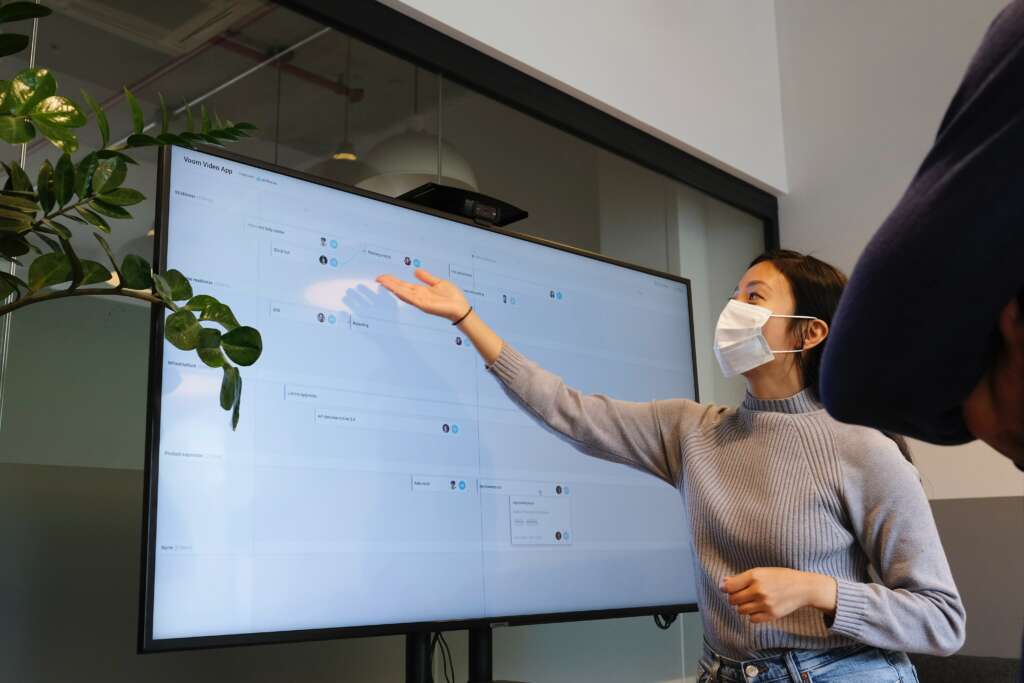
12 Ways You Can Use an API to Create Impressive, Up-to-Date Client Presentations
Posts by Alan TaylorMarch 20, 2023
A client presentation can determine the success of a project you are working on. Things like the information in your presentation, its look and feel, as well as design are vital in creating impressive and up-to-date presentations.
Fortunately, there are different tools and APIs you can use to transform your presentations into amazing pieces of information. Using these tools, your presentation can stand out with eye-catching graphics and attractive designs.
Before discussing how you can use APIs for your presentations, you need to understand what APIs are. Applications Programming Interfaces (APIs) are computing interfaces that dictate the communication and sharing of data between applications.
This means that you can use an API to implement the functionalities of another application when creating presentations. This can be done through API integrations.
API Integrations
API integration can be defined as the connection between different applications through the use of their APIs. The connection allows these applications to share data and communicate for the successful operation of their functions.
For instance, let us assume that you are using an application that allows you to create presentations and you want to implement the functionalities of another application using an API. You can integrate with the API and use these functionalities without the need for any advanced technical assistance.
Some of the ways you can use APIs to create impressive, up-to-date client presentations include;
Creating 3D Images
An image can help your audience understand you more. When creating presentations, it is good to avoid using regular slides and the same 2D images that have always been used. Technology advancement has made it possible for you to create 3D images or shapes for your slides.
You can do this easily using APIs. One of the best APIs for this includes the Aspose.Slides API. This powerful API comes with a wide range of features that you can use to manipulate your presentations.
It not only allows you to come up with interactive designs but to also manipulate your existing presentations easily. It is also used when creating 3D effects for your presentations. The API can be installed using Maven configurations or by downloading its JAR files.

Adding and Manipulating Text
Google released the Slides API as part of the Google G Suite a few years ago. Developers can use this API to create impressive presentations from scratch. Within a few API calls, they can also create slides from spreadsheets. This is great, especially for people who have to make a presentation but their data comes in other formats.
This API can also be used to add and manipulate text in a presentation. Unfortunately, you need to be a developer to use this API. Manipulating text requires one to send a JSON payload through a batchUpdate method. To add text, include the shape you want in a slide then add a string of text.
When reading and manipulating text with the API, you need to understand how the text is structured. This means that the first step should be sending a JSON to identify both the box where the text lies and the indexes of the text you need to change.
Showing Trends in Data
Sometimes, you might find yourself in a situation where you have large amounts of data that you need to capture in your presentation. This can be a challenge since presenting a lot of data in a table format is not attractive.
It also gets difficult for your audience to understand such data, making the presentation useless. Fortunately, you can integrate an API to help you with this. Such APIs, such as the Zegami API, make it possible for you to present data the right way.
Your audience will easily see the trends in your data, making your presentation fun and informative. This helps you to avoid overwhelming them with unnecessary information.
Integrating Presentations into Websites
Sometimes, you might find yourself in a situation where you need to make a presentation, not in person, but through a different medium such as a website. This might be a challenge for most people, but APIs have made it possible.
One of the best APIs for this is the ONLYOFFICE Document Server API. In addition to integrating presentations editors into their websites, developers can also integrate spreadsheets and documents.
Depending on the language that you are familiar with, you can choose from Ruby, PHP, Node.js. Java, and .Net (C#). The ONLYOFFICE Document Server API comes with a host of other features such as corporate networking tools, mail, calendar, CRM, project, and document management.
Creating and Simulating Models
When making PowerPoint slides for civil engineers or even architects, designers need tools and APIs that can simplify their work. An architect, for instance, might have his or her simulations on paper but then want to move them to a screen when making a presentation.
Using APIs such as the Autodesk 3DS Max API, they can easily create and simulate their models. This is important in helping the audience understand architectural designs which can be a challenge for people without technical knowledge.
For example, one can easily show a bridge or a building in 3D in a presentation using this API. This way, they can showcase every aspect of their work easily.
Automate the Creation of Presentations from Templates
Different businesses create presentations for different purposes. Let us take an example of a marketing company that uses software to record interactions with its customers. The software records all the interactions – calls, messages, sales, etc – every single day.
At the end of the month, the heads of every department are supposed to prepare a presentation for the top management. Given that the company interacts with thousands of customers every month, it can be challenging to prepare a presentation that captures every transaction that might have taken place throughout the month.
Fortunately, businesses can use an API to overcome such challenges. The AnalysisPlace Document Generation Service REST API allows companies to submit data in a JSON format – this data can be coming from the software they use – then receive a customized PowerPoint presentation.
Fortunately, this API is easy to use and does not require a lot of technical knowledge. All you need to do is to make sure that your application can submit the data you want in your presentation. This data has to be JSON formatted.

Enhancing Branding and Corporate Design
Sometimes, you might not have enough time to create an impressive and up-to-date presentation. This might leave you with no option but to rely on design tools for final and quick presentation enhancements.
When making a presentation, you might be required to follow a certain branding or corporate design. This might be challenging especially when working on large presentations. Fortunately, you can use APIs to define the design you need to use.
For example, the PptxGenJS, a JavaScript API, allows you to define the layout you want to use through objects used for branding. This makes it easy to use code when creating master slides.
Share Presentations on the Web
The ONLYOFFICE Document Server API allows you to integrate presentation editors into a website. This might take a lot of time especially when you have to prepare the presentations from scratch through the web.
On the other hand, you can share your presentations on the web by simply uploading the presentation files on a website.
Using an API such as the authorSTREAM API, you can share your PowerPoint slides through websites, blog posts, or even on YouTube.
Apart from uploading PowerPoint presentations, this API can also be used in retrieving embed code for presentations as well as embed code and thumbnails for users. You can make a maximum of 100 calls using this API every day.
Transitions and Animations
The transitions and animations found in most presentation applications are quite good when handled well. Even though understanding how to work with these applications is not difficult, most users do not use them well.
Animations are used when designers want to emphasize certain keywords in their presentations. However, this should be done to a certain extent. With animations, you can draw attention to certain information in your presentation.
In addition, you need to ensure that you have a consistent transition from one slide to another and set the right time duration between the slides. This is vital in keeping your audience entertained and helping you observe time.
One of the best APIs for this is the Aspose.Slides API, which is also used for creating 3D images.
Creating Presentations from Mobile Applications
The use of mobile devices has been growing in the past few years. Today, we use mobile devices for almost everything. If I wanted to move from point A to B, I would probably use a mobile application to order a ride and make payment after getting to point B.
Similarly, businesses have invested heavily in mobile applications. They use these applications to interact with their customers and run some of their day-to-day operations. This shows how important mobile applications and devices are.
But how can a person create a presentation from a mobile application, provided they have all the data that they need for the presentation? This can be done easily using the Xamarin API. It allows mobile applications to edit media, text, and shapes into a presentation. It then saves the presentation into the format the user wants.
In addition, the API can also be used to perform other functions such as reviewing the presentation, adding notes and comments, and sharing it via other media such as email. You can even edit the presentation to apply the required theme or split it into different files. This is all done from your mobile applications.

Creation of Charts and Graphs
When making a presentation, you might be forced to come up with charts and graphs to ensure your audience gets to understand what you are talking about. This is important in helping you avoid a boring tabular presentation.
Using an API, you can get a chart or graph generated from data provided to the API. All you need to do is provide the data. Some APIs allow you to choose the kind of charts or graphs that you need.
One of the APIs used for this is the AnyChart API. It helps create different charts, including gauges, area, line, box plot, bubble, error bars, polar, and waterfall, among others.
Presenting Web Pages to Secondary Displays
There are different scenarios where a person might be forced to connect a laptop with an external display but then show something different on the display. Imagine a scenario where a developer is making a presentation on the progress of a project that he or she is working on.
If you ever find yourself in such a situation, you do not have to worry. This is because you can display web pages onto a secondary display through the use of the Presentation API. When doing this, you can control the content on the display using an API known as the Presentation Receiver API. Unfortunately, this is not for every other person.
For you to use this, you need some technical knowledge since you will be creating objects, calling functions, and sending requests. This option is good for developers who want to show what the code they have written can do without showing the code itself.
Conclusion
The popularity of APIs has been growing in the recent past. Today, developers can integrate an API into their applications instead of building functionalities from scratch. This has been crucial in changing how we interact with applications.
Using different presentation applications, designers can integrate APIs to aid in creating impressive and up-to-date applications. With a wide range of APIs to choose from, they need to make sure that they are using modern and updated APIs.
The API options discussed in this article can be used in different situations. Some are too advanced for people without technical knowledge. When choosing an API to create impressive and up-to-date client presentations, make sure you know how it works.
